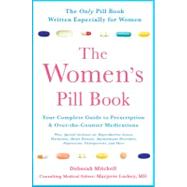
Note: Supplemental materials are not guaranteed with Rental or Used book purchases.
Purchase Benefits
What is included with this book?
DEBORAH MITCHELL is a widely published health journalist. She is the author or coauthor of more than three dozen books on health topics, including eight books for the St. Martin’s Press Healthy Home Library series, as well as THE WONDER OF PROBIOTICS (coauthored with John R.Taylor, N.D.), FOODS THAT COMBAT AGING, YOUR IDEAL SUPPLEMENT PLAN IN THREE EASY STEPS, and WHAT YOUR DOCTOR MAY NOT TELL YOU ABOUT BACK PAIN (coauthored with Debra Weiner, M.D.).
The New copy of this book will include any supplemental materials advertised. Please check the title of the book to determine if it should include any access cards, study guides, lab manuals, CDs, etc.
The Used, Rental and eBook copies of this book are not guaranteed to include any supplemental materials. Typically, only the book itself is included. This is true even if the title states it includes any access cards, study guides, lab manuals, CDs, etc.